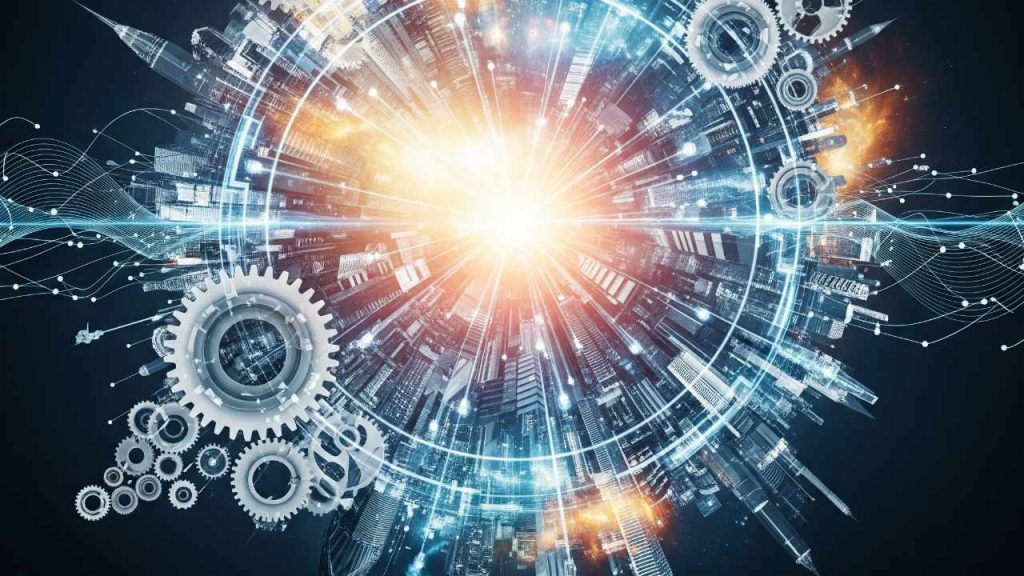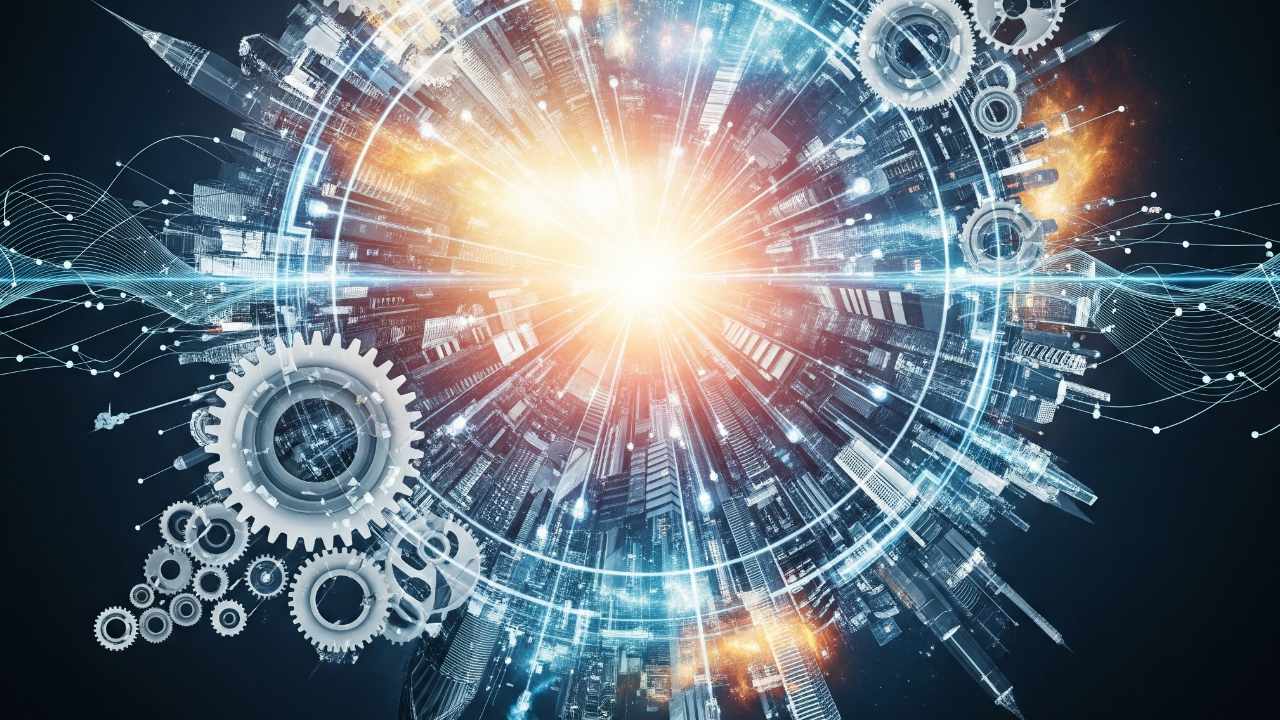
The Algorithmic Revolution: How Crypto and AI Are Redefining Industries
The Intersection of Two Transformative Technologies
The digital landscape is undergoing a seismic shift, driven by the convergence of two groundbreaking technologies: cryptocurrency and artificial intelligence (AI). This synergy is not merely additive but multiplicative, creating opportunities that transcend the capabilities of either technology in isolation. The decentralized trust of blockchain combined with the analytical prowess of AI is unlocking unprecedented efficiencies, transparency, and innovation across industries.
Blockchain: The Foundation of Trustless Systems
Blockchain technology, the backbone of cryptocurrencies, introduces a paradigm shift in how we manage data and transactions. Its decentralized nature eliminates the need for intermediaries, reducing costs and increasing security. This trustless system is particularly impactful in sectors where transparency and efficiency are paramount.
Financial Services: Democratizing Access
Cryptocurrencies are revolutionizing financial services by enabling cross-border payments with minimal fees and near-instant settlement times. Tokenization, a process championed by platforms like Robinhood, allows real-world assets such as art, real estate, and even intellectual property to be represented as digital tokens on a blockchain. This increases liquidity and accessibility, democratizing investment opportunities that were once reserved for the elite.
The emergence of stablecoins, backed by traditional currencies, signals a shift towards digital assets that are stable in value, reducing volatility and making them more suitable for everyday transactions. Legislation around stablecoins is gaining traction, with the U.S. potentially leading the charge in establishing regulatory frameworks that foster innovation while ensuring consumer protection.
Supply Chain Management: Enhancing Transparency
The supply chain industry stands to benefit significantly from blockchain’s immutable ledger. By tracking goods from origin to consumer, blockchain can verify authenticity, prevent counterfeiting, and streamline logistics. This transparency can reduce costs, enhance accountability, and build consumer trust in the products they purchase.
Healthcare: Securing Patient Data
In healthcare, blockchain can secure patient medical records, ensuring privacy and accessibility. Authorized healthcare providers can access vital information seamlessly, improving diagnostic accuracy and personalizing treatment plans. This can accelerate medical research, leading to more effective healthcare outcomes and improved patient well-being.
AI: The Engine of Automation and Insight
Artificial intelligence complements blockchain by providing the analytical power to process vast amounts of data generated by blockchain networks. AI algorithms can identify patterns, predict trends, and automate complex tasks, creating a powerful engine for innovation.
Fraud Detection and Security
AI-powered security systems can analyze blockchain transactions in real-time, flagging suspicious activity and preventing fraud. Machine learning algorithms can learn from past attacks, adapting and improving security protocols to stay ahead of malicious actors. This proactive approach to security is crucial in an increasingly digital world.
Algorithmic Trading and Investment
AI algorithms can analyze market data, identify profitable trading opportunities, and execute trades automatically. This automation optimizes investment strategies, maximizing returns and reducing risk. The combination of AI’s analytical capabilities with the speed and efficiency of cryptocurrency trading can lead to more efficient and data-driven investment decisions.
Personalized Healthcare
AI can analyze patient data stored on a blockchain to personalize treatment plans, predict potential health risks, and recommend preventative measures. This personalized approach to healthcare can lead to more effective outcomes, improving patient well-being and reducing healthcare costs.
Content Creation and Curation
AI can analyze user preferences and consumption patterns to curate personalized content experiences. This can enhance creative processes, detect copyright infringements, and ensure fair compensation for artists. The entertainment industry stands to benefit significantly from this synergy, empowering artists and fostering innovation.
Synergistic Applications: The Future of Collaboration
The true potential of crypto and AI lies in their synergistic applications. By combining the decentralized trust of blockchain with the analytical power of AI, industries can unlock unprecedented levels of efficiency, transparency, and innovation.
Decentralized Autonomous Organizations (DAOs)
DAOs are organizations governed by rules encoded on a blockchain and enforced by smart contracts. AI can enhance DAOs by automating decision-making processes, optimizing resource allocation, and predicting potential risks. This can lead to more efficient and transparent organizations, fostering greater collaboration and innovation.
Smart Contracts
Smart contracts are self-executing contracts written in code and stored on a blockchain. AI can be used to analyze and optimize smart contracts, ensuring their security and efficiency. This can lead to more reliable and trustworthy agreements, reducing the need for intermediaries and legal disputes.
Decentralized Finance (DeFi)
DeFi platforms use blockchain technology to provide financial services such as lending, borrowing, and trading without intermediaries. AI can be used to analyze market data, manage risk, and optimize investment strategies in DeFi platforms. This can lead to more efficient and accessible financial services for everyone.
AI-Driven Crypto Trading Platforms
These platforms leverage AI to analyze market data, identify patterns, and execute trades automatically. The combination of AI’s analytical capabilities with the speed and efficiency of cryptocurrency trading can lead to higher returns and reduced risk.
Tokenized AI Models
AI models can be tokenized and traded on blockchain networks, allowing developers to monetize their creations and users to access cutting-edge AI technology. This can democratize access to AI and foster innovation in the field.
Navigating the Challenges
Despite the immense potential of crypto and AI, several challenges must be addressed to ensure their responsible and sustainable development.
Regulatory Uncertainty
The lack of clear regulatory frameworks for cryptocurrencies and AI can stifle innovation and create uncertainty for businesses. Governments must work together to establish clear and consistent regulations that protect consumers while fostering innovation.
Security Risks
Blockchain networks and AI systems are vulnerable to security threats such as hacking and data breaches. Robust security measures must be implemented to protect user data and prevent malicious attacks.
Ethical Considerations
AI raises ethical concerns such as bias, privacy, and job displacement. Developers and policymakers must address these concerns to ensure that AI is used responsibly and ethically.
Scalability
Some blockchain networks struggle to handle high transaction volumes, limiting their scalability. Technological advancements such as layer-two scaling solutions are needed to improve scalability and enable widespread adoption.
Interoperability
The lack of interoperability between different blockchain networks and AI systems can hinder their integration and limit their potential. Standards and protocols are needed to facilitate interoperability and enable seamless communication between different systems.
Embracing the Transformation
The confluence of cryptocurrency and artificial intelligence represents a paradigm shift, a technological renaissance poised to redefine industries and reshape our world. As Vlad Tenev, CEO of Robinhood, has aptly stated, these technologies are not merely trends but fundamental forces that will shape the future. By embracing innovation, fostering collaboration, and addressing the inherent challenges, we can harness the power of crypto and AI to create a future where technology empowers individuals, promotes economic growth, and improves the quality of life for all. The algorithmic age is upon us, and the possibilities are limitless.





